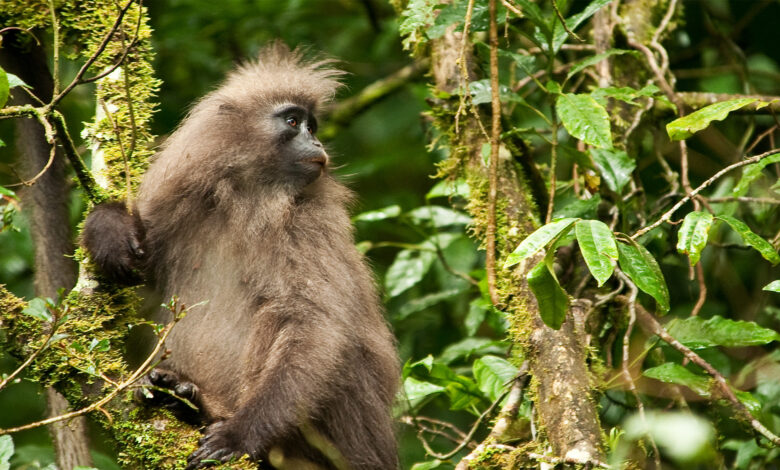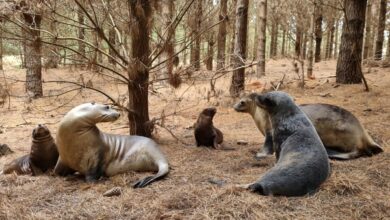
Kipunji live in montane and submontane forests at elevations between 1,152 m asl and 2450 m, according to the latest census. They prefer steep sided gulleys and valley edges. Image Credit: Courtesy of Tim Davenport
Animals TanzaniaHolistic Approach to Save This Elusive Monkey
Tanzania is home to the kipunji monkey, whose population has increased by 65% following intensive holistic conservation efforts over two decades by granting greater legal protection for forests and community engagement to help save the elusive primate’s habitat.
“You’re permanently looking for the end game. And there are now opportunities, there are people doing tourism, both the Tanzania Forestry Service [and] Tanzania National Parks are doing good stuff,” says Tim Davenport, formerly director of species conservation and science for Africa at Wildlife Conservation Society (WCS), and now Africa director for Re:wild. “It’s not perfect by any means. But it’s in a considerably better place than it used to be.”
There are 1,966 individuals in two subpopulations in Tanzania’s Southern Highlands. The kipunji monkey – or Rungwecebus kipunji – has a light-brown tufted triangular crest, a black face, a muzzle similar to a baboon’s, and a loud honking call. Very similar to another species, the kipunji is the first new primate genus described in Africa in more than 80 years. With its habitat in a fragile state due to human activity, the endemic species’ population was only 1,117 individuals in 2007, the year of the first census. With kipunji monkeys raiding nearby farms for food, some areas were turned into nature reserves. WCS launched a holistic, long-term conservation program that included education programs – including comprehensive ones targeting villages within 5 km of the protected forests – hoping to change people’s attitudes. Thirteen years after the first census, the primate population increased by 65% while human disturbances dropped by 81%.



